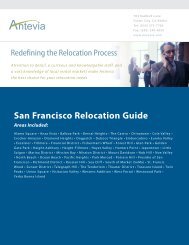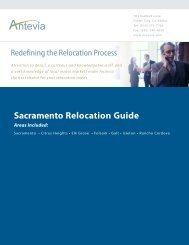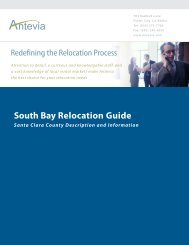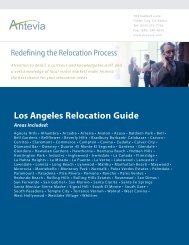Palmenthal, the first European settlement within the limits of Palmdale, was establishedas a village in 1886 by westward travelers from the American Midwest, mostly ofGerman and Swiss descent. These travelers mistook the local Joshua Trees for PalmTrees and so called their settlement after them. The village was officially establishedupon the arrival of a post office on June 17, 1888.In the 1890s many families continued to migrate to Palmenthal and nearby Harold togrow grain and fruit. However, most of these settlers were unfamiliar with farming in adesert climate, so when the drought years occurred, most abandoned their settlement. By1899, only one family was left in the original village. The rest of the settlers, includingthe post office, moved closer to the Southern Pacific railroad tracks. This newcommunity was renamed Palmdale and was located where the present day civic center is.A railroad station was built along the tracks there. This railroad was operated by SouthernPacific and traveled between <strong>Los</strong> <strong>Angeles</strong> and San Francisco. There was also the WellsFargo stagecoach line that ran between San Francisco and New Orleans that stoppedthere as well. The only remaining pieces of evidence of the original settlements ofPalmenthal and Harold are the old cemetery located on the northeast corner of Avenue Sand 20th Street East, and the old schoolhouse now relocated to McAdam Park.As the population of Palmdale began to increase after relocation, water became scarce,until in 1914 when the California – <strong>Los</strong> <strong>Angeles</strong> Aqueduct system was completed.During the 1910s, crops of apples, pears, and alfalfa became plentiful.In 1915, Palmdale’s first newspaper, the Palmdale Post, was published. Today it is calledThe Antelope Valley Press.In 1921, the first major link between Palmdale and <strong>Los</strong> <strong>Angeles</strong> was completed, U.S.Highway 6, or Mint Canyon Road. Completion of this road caused the local agriculturalindustry to flourish and was the first major step towards defining the metropolis thatexists today. Presently this road is known as Sierra Highway.In 1924, the Littlerock Dam and the Harold Reservoir, present day Lake Palmdale, wereconstructed to assist the agricultural industry and have enough water to serve the growingcommunities.Agriculture continued to be the foremost industry for Palmdale and its northern neighborLancaster until the outbreak of World War II. In 1933, the United States governmentestablished Muroc Air Base north of Lancaster in Kern County, now known as EdwardsAir Force Base. They also bought Palmdale Airport in 1952 and established an aerospacedevelopment and testing facility called United States Air Force Plant 42. One year later,in 1953, Lockheed established a facility at the airport. After this point in time, theaerospace industry took over as the primary local source of employment, where it hasremained ever since. Today the city is even referred to as the “Aerospace Capital ofAmerica” because of its rich heritage in being the home of many of the aircraft used inthe United States military.
In 1956, Palmdale’s first high school was established, making it easier for youths to nothave to travel to Antelope Valley High School in nearby Lancaster.In August 1962, the township of Palmdale officially became the city of Palmdale with theincorporation of 2 square miles (5 km²) of land around the present day civic center.In 1963, the Antelope Valley Freeway, or State Highway 14, was completed as a linkbetween Palmdale and <strong>Los</strong> <strong>Angeles</strong>. The freeway at this time ran all the way to presentday Technology Drive. It was at this time that talk about the future PalmdaleIntercontinental Airport was seen as the way of the future. By 1965 the new city hadannexed an additional 20 square miles (52 km²) of land and industry was thriving. Talk ofthe future commercial airport had many investors buying up large quantities of land.In 1970, the City of <strong>Los</strong> <strong>Angeles</strong> went forward with buying 17,500 acres (71 km²) of landeast of the city for its proposed commercial airport. However, the United States Air Forcedesired to put a hold on the construction of this new facility until the existing airportreached its commercial capacity. So under a joint use agreement with the military, the<strong>Los</strong> <strong>Angeles</strong> Department of Airports, now called <strong>Los</strong> <strong>Angeles</strong> World Airports, built a9,000 square foot (800 m²) terminal on leased land that opened in 1971, creating presentday Palmdale Regional Airport.By 1974, the Antelope Valley Freeway was completed all the way to Mojave. In 1977,Palmdale built its first municipal building, the Palmdale City Library. This was the sameyear that its northern neighbor Lancaster incorporated itself into a city. Since the 1920s,Lancaster had been the much larger and principal community of the Antelope Valley, aswell as the rest of California's Mojave Desert, and Palmdale had always played secondfiddle to it. The 1980s and 1990s were the decades that really started to define the twoAntelope Valley cities. Affordable housing in the area caused a dramatic spike in thepopulation. The city became a bedroom community for those employed in <strong>Los</strong> <strong>Angeles</strong>.Palmdale's population continued to approach Lancaster's. Throughout the eighties andeven the nineties, Palmdale was the fastest growing city in California and second fastestgrowing city in the nation. In 1980, Palmdale's population was 12,177. By 1990, it hadsoared to 68,842. It was in 1990 that the Antelope Valley Mall opened at Rancho VistaBlvd. and 10th Street West, presently the busiest intersection in the entire Mojave Desert.In 1991, the Palmdale Auto Center complex opened. Throughout the 1990s and early2000s, central Palmdale has become the commercial center of the California High Desert.In 2000, the city's population was 116,670. In 2002, Palmdale's population finallyeclipsed its northern neighbor Lancaster, with over 137,000 residents today. The citycontinues to look forward to quality managed growth in the future.EducationK-12 SchoolsThe City of Palmdale has 3 separate elementary school districts and 1 high schooldistrict:
- Page 1:
703 Radford LaneFoster City, CA 944
- Page 4 and 5:
The city is divided into three majo
- Page 6 and 7:
• Willow Elementary School• Yer
- Page 8 and 9:
has since developed on Valley Boule
- Page 10 and 11:
Arcadia, CaliforniaFrom Wikipedia,
- Page 12 and 13:
James Dobson, a previous Arcadia re
- Page 14 and 15:
EconomyThe median income for a hous
- Page 16 and 17:
Burbank, CaliforniaSeal of BurbankF
- Page 18 and 19:
In the meantime, the United States
- Page 20 and 21:
for service south into Downtown and
- Page 22 and 23:
Looking east over Burbank from Univ
- Page 24 and 25:
at Lockheed's Skunkworks• Patton
- Page 26 and 27:
From Wikipedia, the free encycloped
- Page 28 and 29: José María Verdugo, a corporal in
- Page 30 and 31: and the musical Hollywood Hotel wit
- Page 32 and 33: Community organizationsThe City of
- Page 34 and 35: The municipal pier in downtown Herm
- Page 36 and 37: The modern day punk band Pennywise
- Page 38 and 39: Lancaster is the ninth-largest city
- Page 40 and 41: SealLocationLocation within Los Ang
- Page 42 and 43: Tourists are also drawn to Long Bea
- Page 44 and 45: Shipping and transportationAerial v
- Page 46 and 47: Long Beach has some bike paths alon
- Page 48 and 49: Long Beach Grand PrixThe Long Beach
- Page 50 and 51: During the two Olympic Games held i
- Page 52 and 53: ParadesChristmas boat "parades" are
- Page 54 and 55: including truck beds,steering colum
- Page 56 and 57: Private high schools• Cambodian C
- Page 58 and 59: • St Maria GorettiElementary Scho
- Page 60 and 61: • Bixby Village• Bluff Park•
- Page 62 and 63: • Dave Hansen: MajorLeague Baseba
- Page 64 and 65: • George Deukmejian:Governor ofCa
- Page 66 and 67: TriviaDouglas "Wrong Way" Corrigan
- Page 68 and 69: Transportation• Long Beach Public
- Page 70 and 71: Manhattan Beach) was purchased by A
- Page 72 and 73: The district as a whole received a
- Page 74 and 75: • Brian Cook: Powerforward for th
- Page 76 and 77: Street map from Google Maps or Yaho
- Page 80 and 81: • The Palmdale SchoolDistrict is
- Page 82 and 83: Valley College maincampus.• Chapm
- Page 84 and 85: original village in the1800’s.•
- Page 86 and 87: Quartz Hill (district).Some P.O. bo
- Page 88 and 89: eliable that wind turbines are used
- Page 90 and 91: • Grubb & Ellis• ICS Perely & S
- Page 92 and 93: Public transportationThe Palmdale T
- Page 94 and 95: Street map from Google Maps or Yaho
- Page 96 and 97: The original inhabitants of Pasaden
- Page 98 and 99: Southern California in 1941, and th
- Page 100 and 101: • The Waverly School• Mayfield
- Page 102 and 103: observatory sinceLowe was such apat
- Page 104 and 105: parrots fall into as many as five d
- Page 106 and 107: • The Gamble House• Old Town Pa
- Page 108 and 109: According to the local newspaper, t
- Page 110 and 111: allows properties within two to thr
- Page 112 and 113: Redondo Beach is the birthplace of
- Page 114 and 115: A typical stretch of Valencia Boule
- Page 116 and 117: Television and movie productionBeca
- Page 118 and 119: Santa Monica is a coastal city in w
- Page 120 and 121: Palisades Park. The sheds were open
- Page 122 and 123: The city owns and operates a genera
- Page 124 and 125: DemographicsThe seal of the City of
- Page 126 and 127: See also• Lynette Fromme,criminal
- Page 128 and 129:
City of Torrance, CaliforniaSealLoc
- Page 130 and 131:
Torrance Beach lies between Redondo
- Page 132 and 133:
• Other schools: Thelargest Engli
- Page 134 and 135:
• Lisa Moretti - WWE's"Ivory"•
- Page 136 and 137:
Website: www.weho.orgWest Hollywood
- Page 138 and 139:
As of the census GR2 of 2000, there
- Page 140 and 141:
The West Hollywood Halloween Carnav







